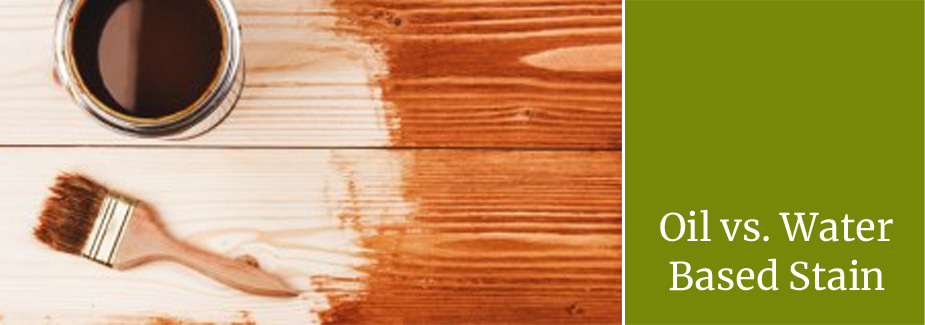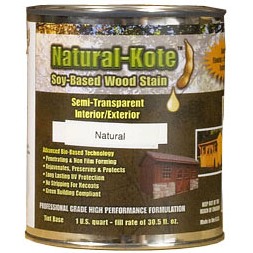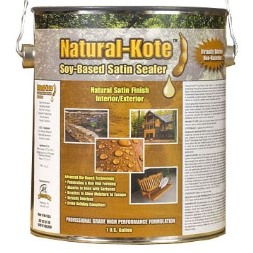
Oil vs. Water Stains (Sealers)
You want to stain (or seal) your new patio furniture and the first thing you read is that you have to use water based stain. No wait minute, we meant to say oil based stain. O great now you have us confused. This is a dilemma that everyone goes through when you want to stain some wood furniture. We know you don’t want to hear this but there is NO right answer. We have gathered some facts and other information that we think will assist you in your decision of what type of stain you should use for your application.
Water Based Stains
Breathability – Water based stains are a more breathable finish. This allows the wood to use its own inherent properties of protection. It will not trap moisture in the wood and it works well with less dense woods that have natural rotting resistance such as cedar, cypress and even redwood.
Application – Water base stains have some advantages when it comes to application. They do not have any harmful fumes so they can be used inside or in an enclosed area. They have a faster dying time and clean up with just water and soap. One issue with water based stains is that they can raise the grain of the wood. It is less of a problem with outdoor furniture where you are not trying to get a mirror finish like indoor furniture. (Remember you can put water based finishes over oil but not oil finishes over water.)
Mildew
Water based stains are all mildew resistant because of their breathability but there are additives that some manufacturers put in their products that can increase the level of mildew.
Environment
Water based stains are considered more environmentally friendly. They have less harmful chemicals as discussed above and some may actually be stamped ecofriendly such as soy based stains. Water based stains are not flammable.
Durability
Water based stains have become more durable than they use to be but oil based stains are still considered to be more durable. This does mean you will have to reapply more often that oil based finishes but the advantage of easier application does offset this somewhat.
Oil Based Stains
Breathability
Oil stains tend to seal the wood which can trap moisture in woods that are not tight grained such as teak. It penetrates deeper into the wood than water stains do which makes for a more durable coating. So while it can seal moisture in it also tends to make it harder for the elements to penetrate the wood in the first place.
Application
The long drying time of oil based stains make it easier on the actual application of the stain. You have more time to get an even color across the item you are staining. Oil stains need to be applied in a well-ventilated area. They can be flammable. They have a higher VOC (Volatile Organic Compounds) level. (It is also important to know that the rags you use can self-combust so care must be used when disposing of the rags you use in an oil staining project.)
Mildew
Most of the new exterior oil based stains are mildew resistant but unlike water based stains they must specifically state it on the label.
Environment
As stated above oil based stains have a lot of VOC’s (Volatile Organic Compounds). This tends to make them less environmentally friendly in the application but there is no real difference in the two types of stains once they have dried on the wood.
Durability
Oil stains are considered to be a longer lasting finish. They do penetrate deeper into the grain of the wood. You historically no not have to reapply it as often as water based finishes.
Now that you have some more facts we hope you can choose the type of stain or sealer (the above also applies to sealers) for your project. As we stated originally, there is no right answer. It comes down to what you think works best for your application. In most cases we prefer water based stains for soft woods such as cypress, cedar and pine and oil based finishes for hard woods such as teak and shorea. Just remember that when it comes to outdoor furniture no matter what type of finish you choose, the way to make your furniture last is to reapply the finish when it looks like it needs it.
Go Back to our Learning Center Main Page



